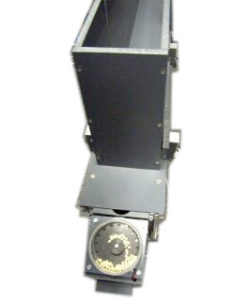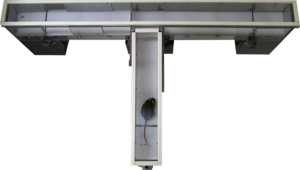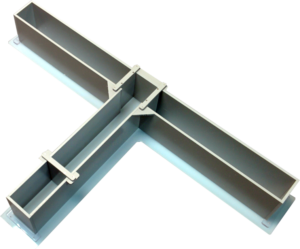The location of the animal in the T-Maze may be acquired by infrared sensors or by our videotracking system. Our videotracking system may be used to detect the position of the animal in openfields and various mazes (Y, T, radial maze, elevated + maze, water maze,…).
The T-maze is mounted on a 50-cm high aluminum structure. The 3 arms of the  maze are ended by a compartment limited by an automated door closing from the bottom.
maze are ended by a compartment limited by an automated door closing from the bottom.
The animal is placed in the starting arm and is asked to reach the end of an ending arm. A pellet dispenser may be added at the extremity of the arms.
Each T-Maze is connected to an electronic interface, which provides the formatting of signals from infrared sensors and allows communication with the computer.


The software allows the simultaneous and independent management of up to 6 T-Mazes. Our software:
A software module for managing data files can calculate output variables:
A large number of variables may be obtained. They are arranged in a Microsoft Excel compatible file.
We propose solutions to couple the analysis of the behavior with electrophysiological recordings and optogenetic activation.
We propose:
We developed: